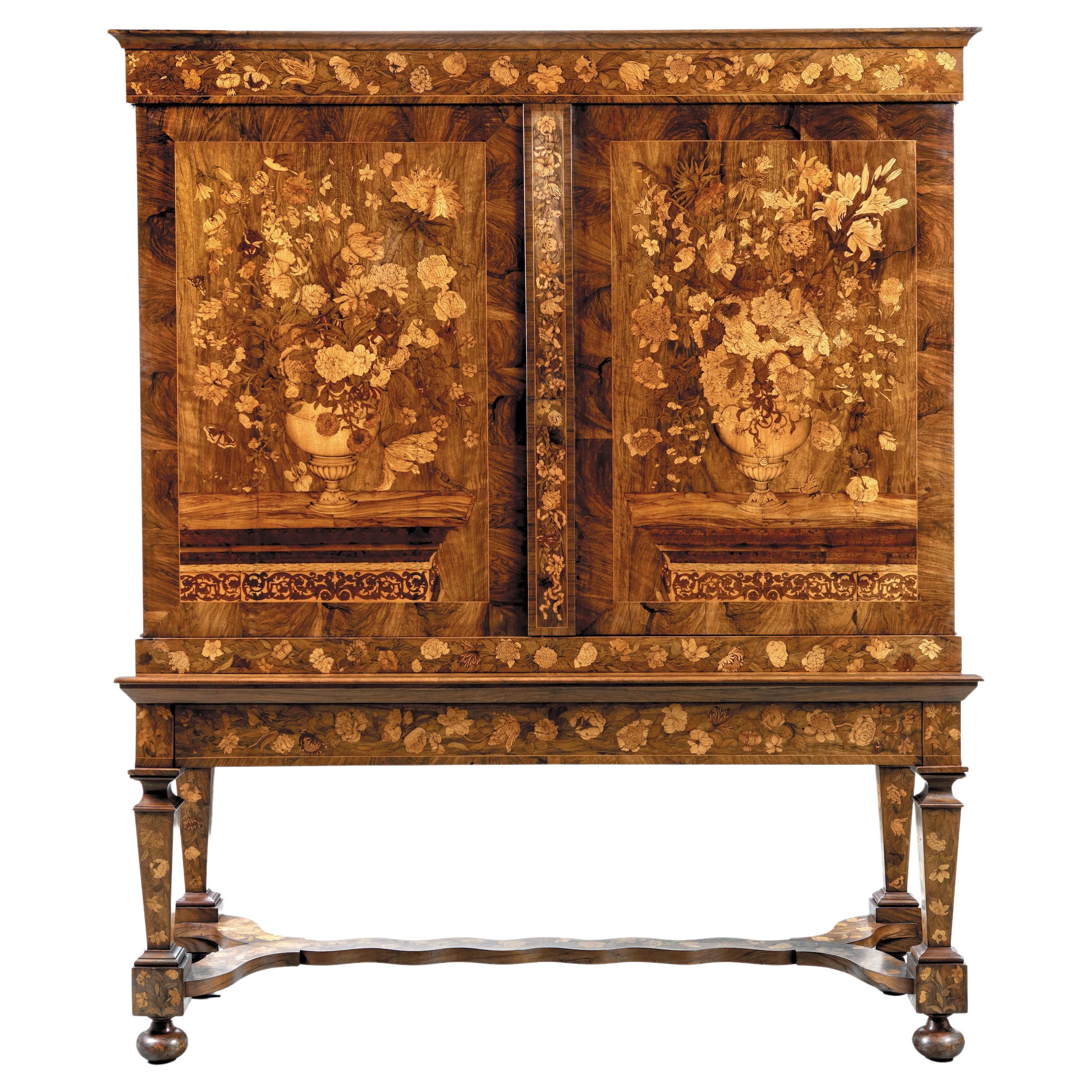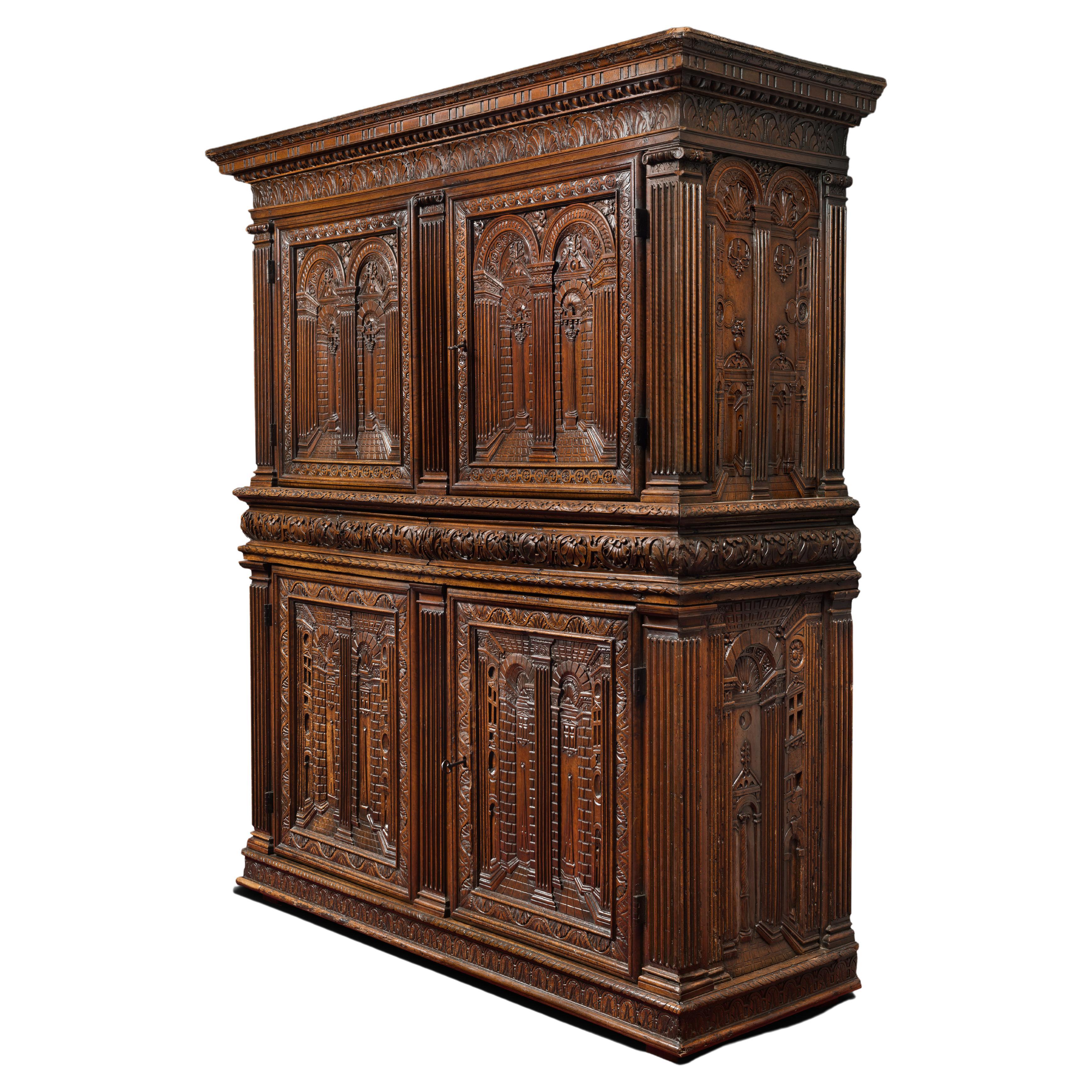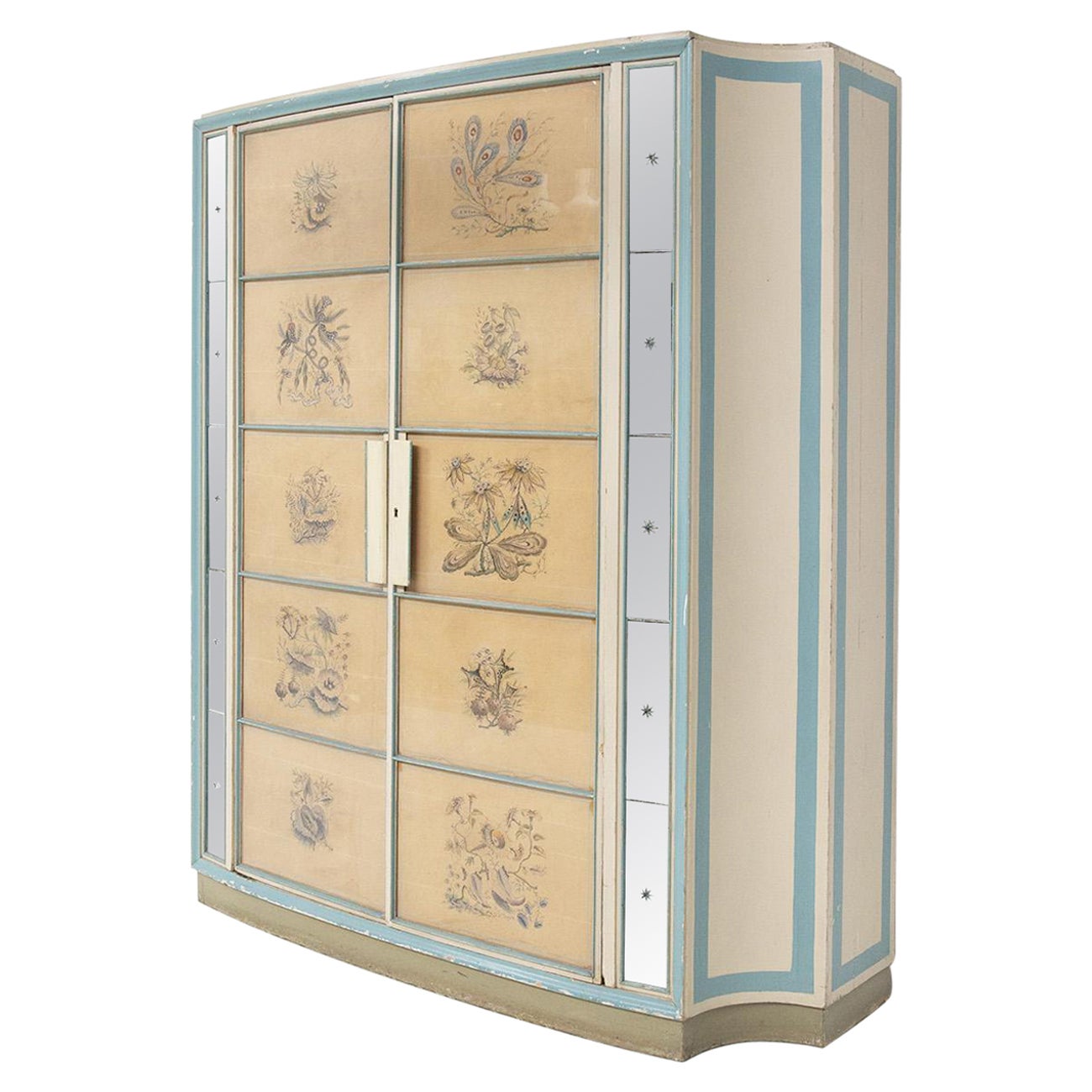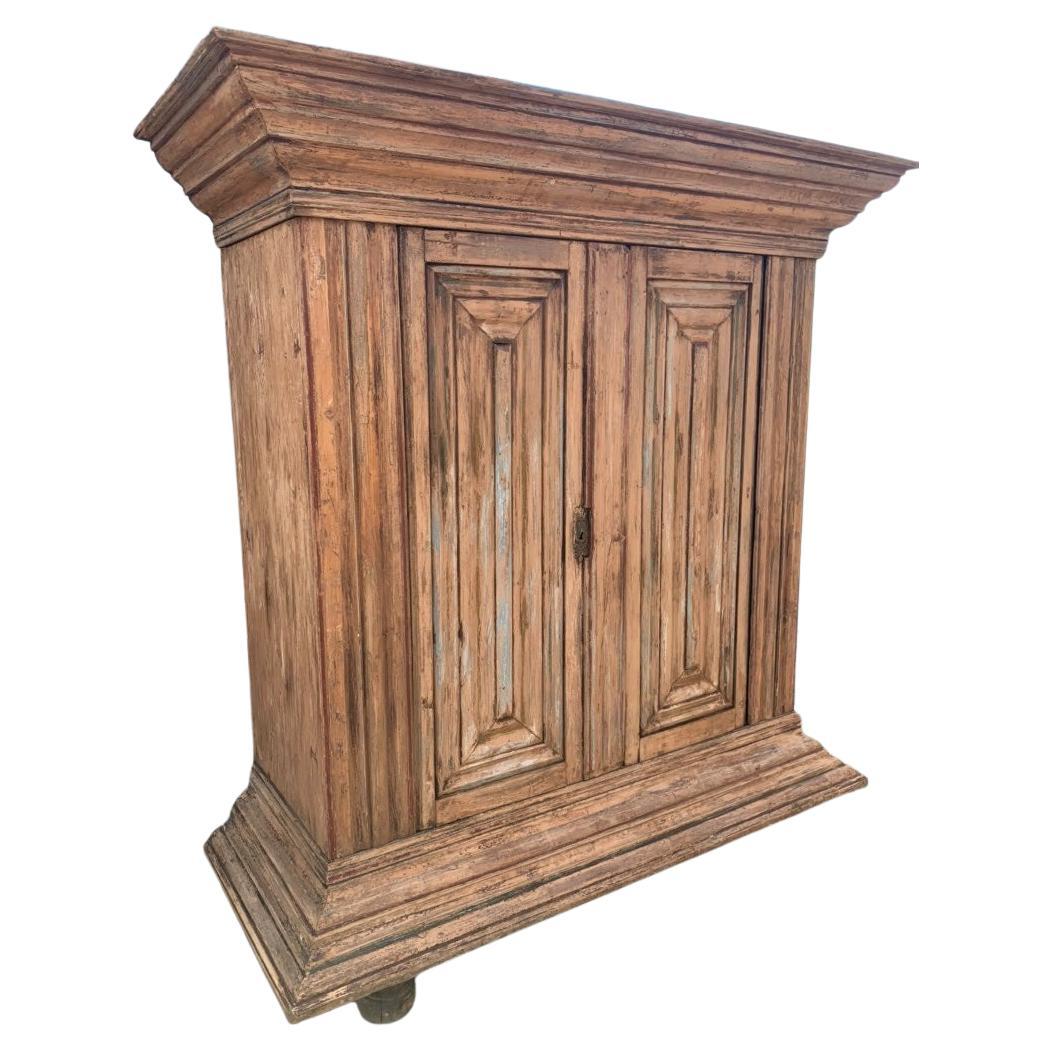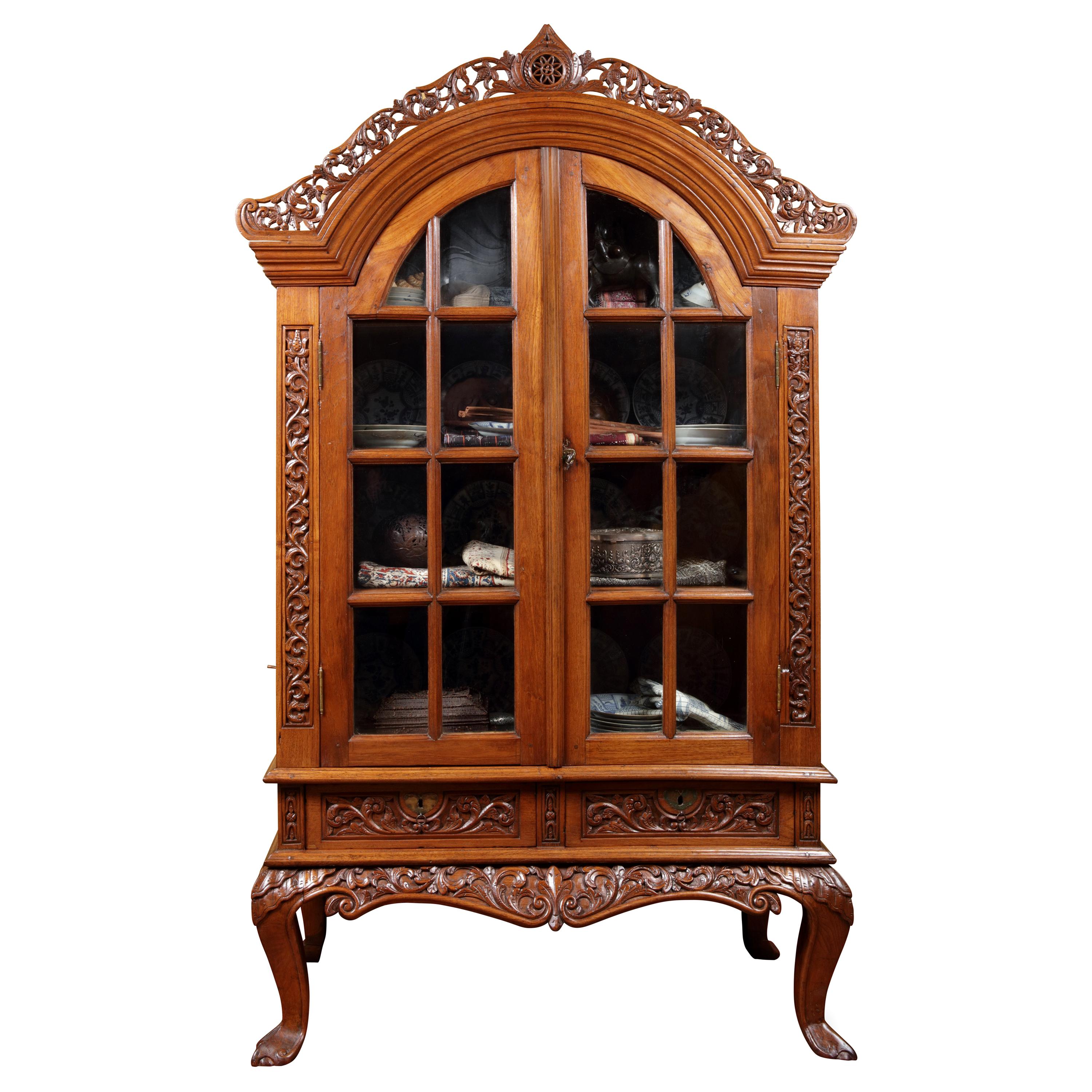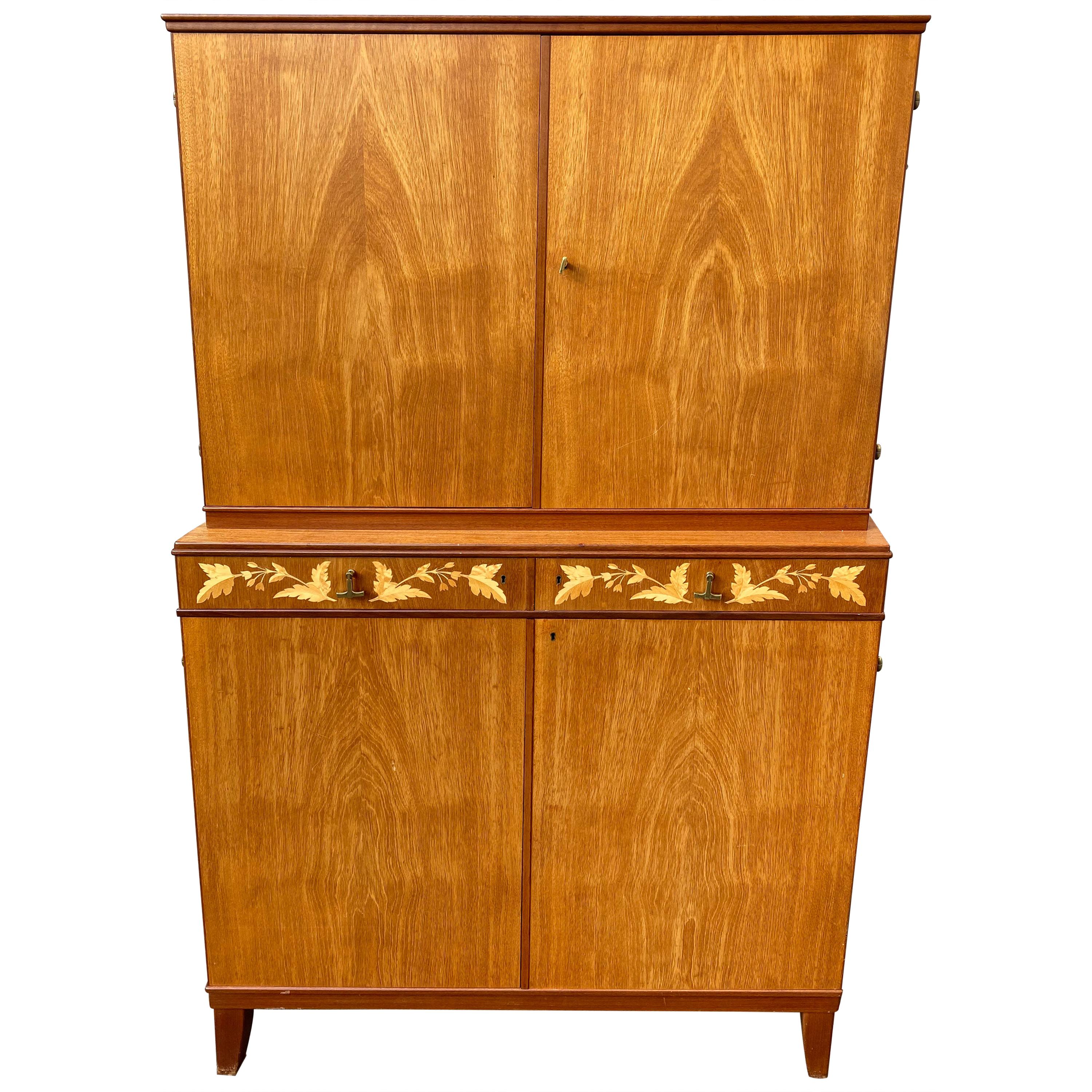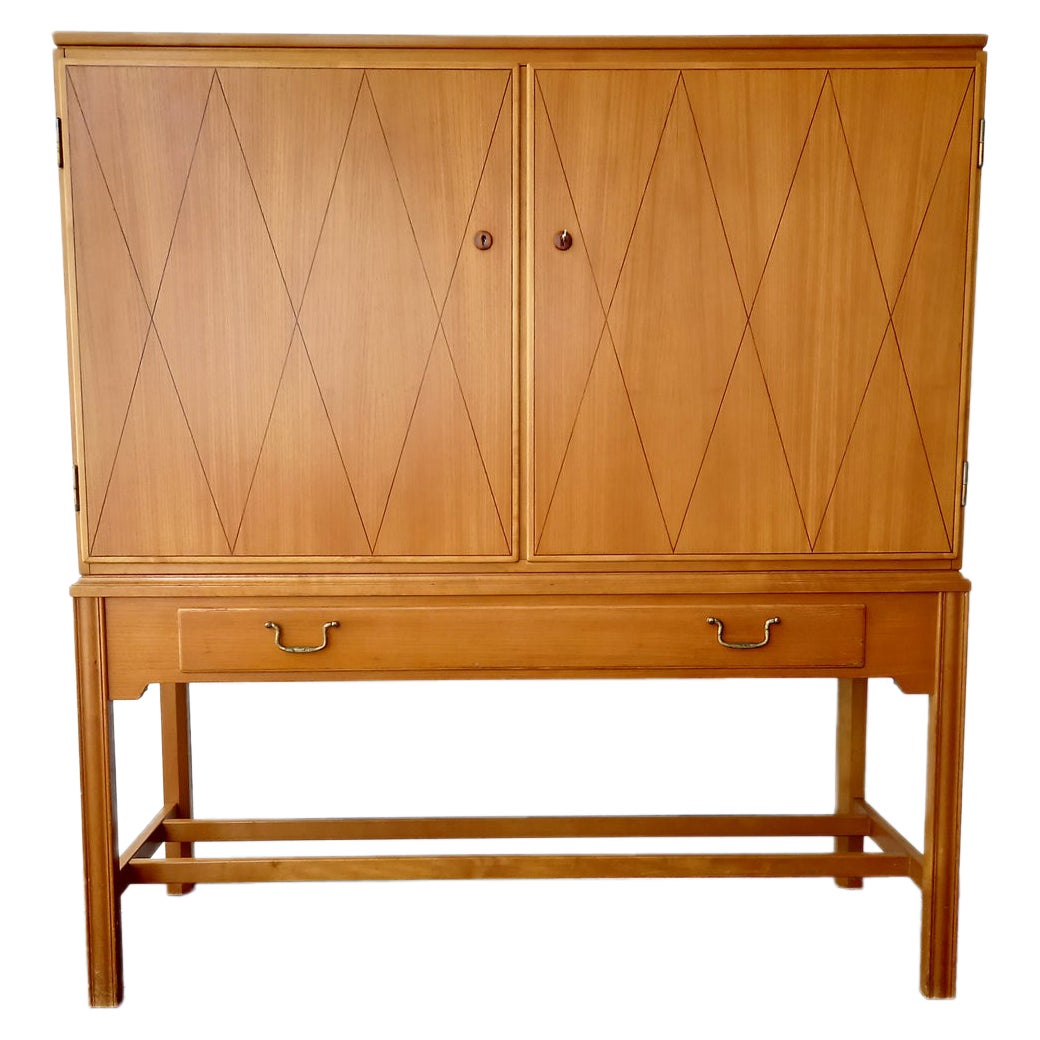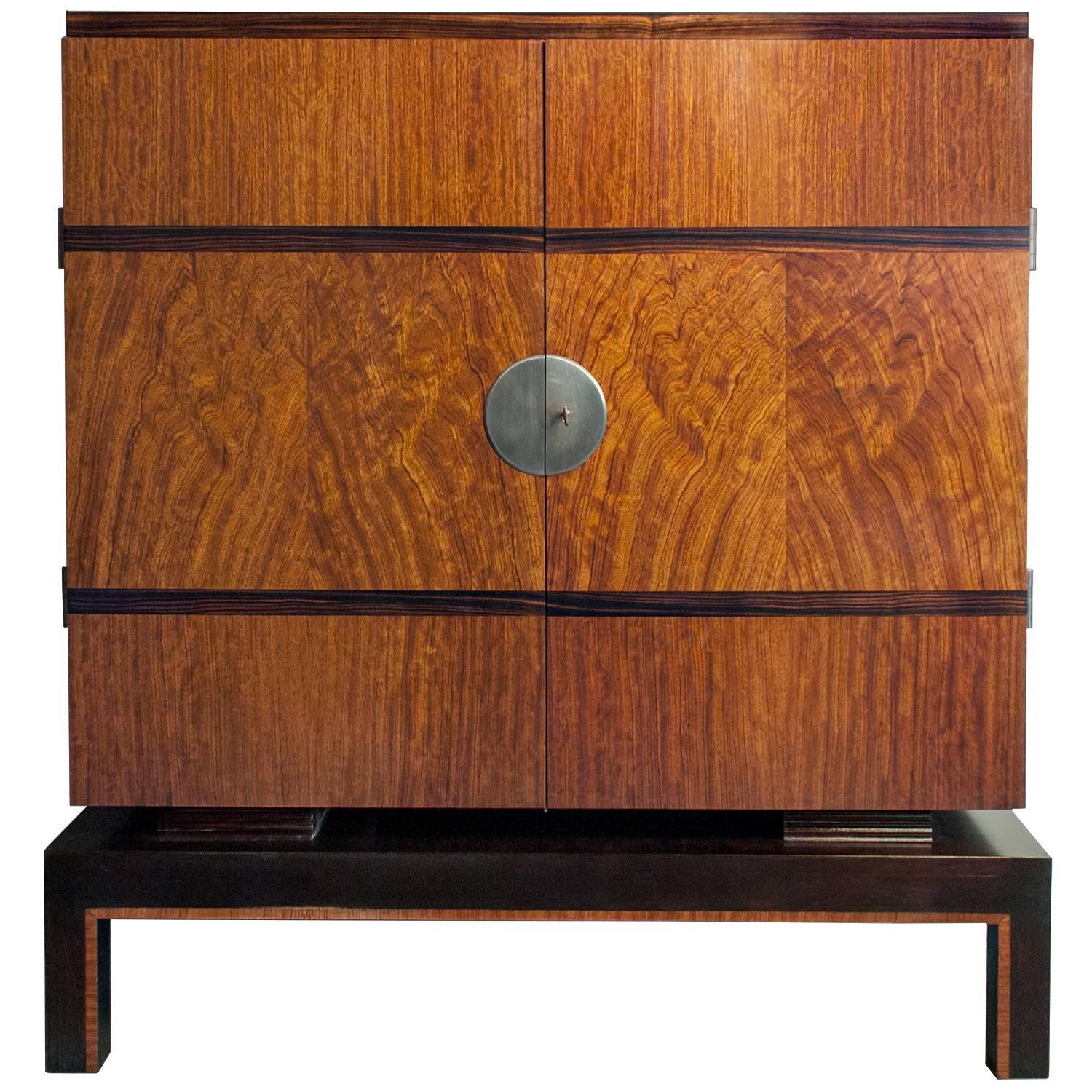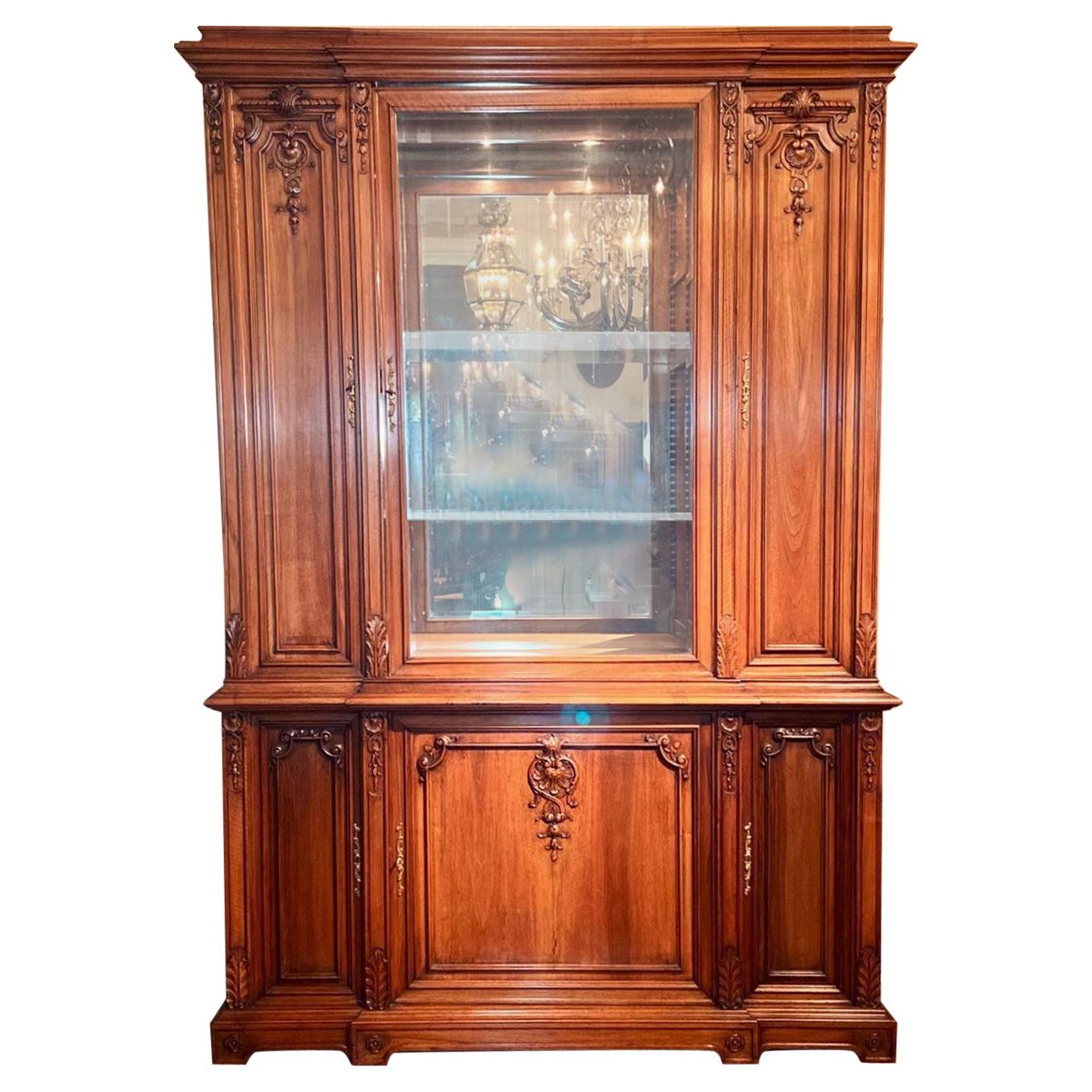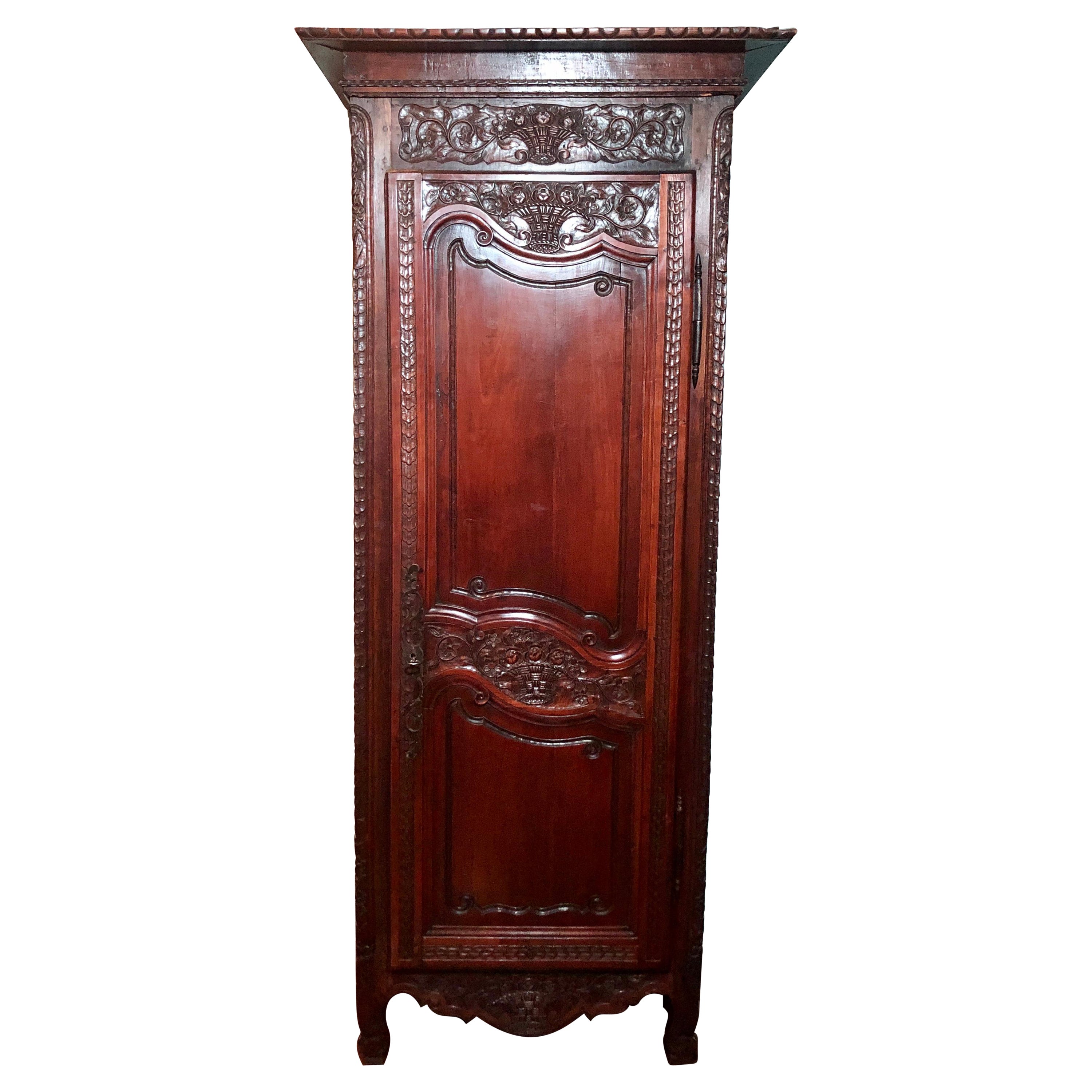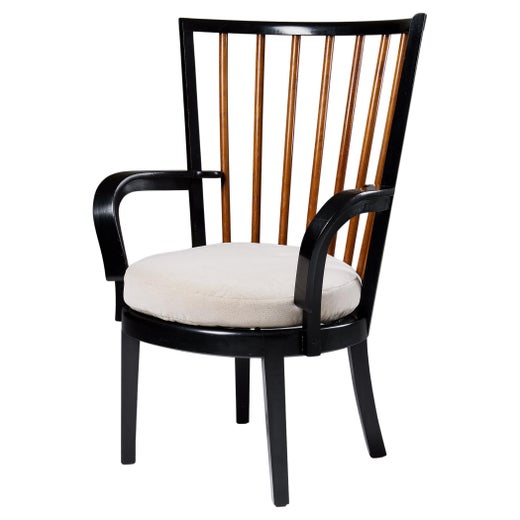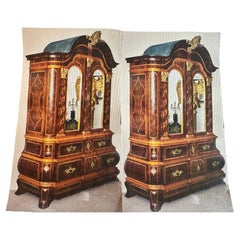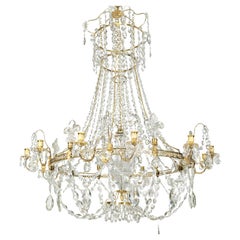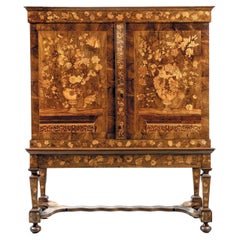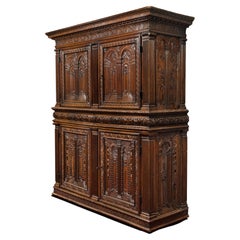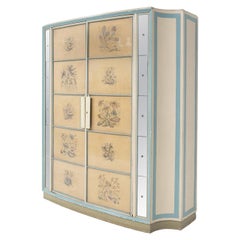
Important Swedish Cabinet circa 1929
View Similar Items
Important Swedish Cabinet circa 1929
About the Item
- Creator:Axel Einar Hjorth (Designer)
- Dimensions:Height: 70.48 in (179 cm)Width: 49.22 in (125 cm)Depth: 21.66 in (55 cm)
- Style:Neoclassical (Of the Period)
- Materials and Techniques:
- Place of Origin:
- Period:
- Date of Manufacture:1929
- Condition:Wear consistent with age and use.
- Seller Location:Stockholm, SE
- Reference Number:1stDibs: LU10068973964
Axel Einar Hjorth
Swedish furniture designer Axel Einar Hjorth (1888–1959) created pieces that were as elegant as they were functional, and he frequently worked in references to a litany of inspirations including French Art Deco, Gustavian style and modernism. Ahead of his time, his style was refined and daringly simple.
Born in Krokek, Sweden, Hjorth grew up in a foster family and at 20 moved to Stockholm where he studied architecture and design at the Högre Konstindustriella Skolan (now the University of Arts, Crafts & Design). Although he dropped out when his foster father died, he went on to work for some of the largest furniture manufacturers in Sweden during the 1920s. His work was featured in the 1923 Gothenburg Exhibition world’s fair, and he exhibited a birch and cherry cabinet in the 1927 Swedish Contemporary Decorative Arts at the Metropolitan Museum of Art in New York. His role as the head of the furniture department at Nordiska Kompaniet (NK), an upscale department store in Stockholm, from 1927 to 1938, further brought his designs to widespread acclaim, including pieces exhibited at the 1929 Barcelona International Exposition.
At the 1930 Stockholm Exhibition, an influential event in the emergence of functionalism in Swedish design, Hjorth exhibited a dozen room settings that featured examples of sportstugemöbler. These furniture lines were named for islands in Sweden’s archipelago — Utö, Blidö and Torö — with designs intended for cabins and vacation homes. The use of solid Swedish pine in these pieces revealed a love of traditional rustic furniture while the simple forms boldly looked to the future. He also brought his eclectic influences to armchairs formed from tubular metal, blocky cabinets made from birch and upholstered sofas with neoclassical details, each exuberantly mixing form and function.
Find Axel Einar Hjorth furniture today on 1stDibs.
- A pair! of rococo style cabinets.Located in Stockholm, SEA highly unusual pair of rococo style cabinets. The cabinets are made as exact copies of the Swedish 18th c cabinetmakers Jonas Hultstens masterpiece, now in the collection of Nordis...Category
Mid-20th Century Swedish Rococo Cabinets
MaterialsBronze
$18,117 / set - Magnificent Antique Important and large 18th c chandelierLocated in Stockholm, SEThe handmade crystals adorning this magnificent Louis XVI chandelier are of unparalleled quality. Each crystal is a testament to the skill of the artisans who painstakingly shaped an...Category
Antique Late 18th Century Swedish Louis XVI Chandeliers and Pendants
MaterialsCrystal, Bronze
- Swedish Table Mirror, Swedish Grace, 1920s, Signed Nils FogstedtLocated in Stockholm, SEA table mirror made of pewter with motives of flowers, a man, grapes and the sun. This mirror is an early example of Swedish Grace and made in the mid 1920s. It is signed N S (Nils F...Category
Vintage 1920s Swedish More Desk Accessories
MaterialsPewter
$342 Sale Price20% Off - Pair of Important Gilt Bronze Candelabra with Cut Crystal Arms, 1780sBy Piat Joseph Sauvage 1Located in Stockholm, SEA pair of important and highly unusual candelabra from the 1780s. The bases are made of gilt bronze with inserted, glasscovered paintings on ivory. The paintings are by Piat-Joseph S...Category
Antique Late 18th Century European Louis XVI Candelabras
MaterialsCrystal, Bronze
$21,081 Sale Price / set46% Off - Lead Pidgin, 18th Century SwedishLocated in Stockholm, SEA rare lead pidgin that was used as a counterweight when hanging chandeliers. The pidgin was above the chandelier or lantern towards the roof. When candles were to be changed you pul...Category
Antique 18th Century Swedish Gustavian Models and Miniatures
MaterialsLead
- Vintage iron stool, Swedish Grace 1930sLocated in Stockholm, SEA Swedish stool cast in iron with wood seating in untouched condition. Swedish grace and made around 1930-1940. Perfect for indoors or outdoors use. Designer is unknown but it is a s...Category
Vintage 1930s Swedish Stools
MaterialsIron
- Highly Important Dutch Floral Marquetry Cabinet by Jan van Mekeren, circa 1700By Jan van MekerenLocated in Amsterdam, NLThe Van Mekeren cabinet: A Newly Discovered Pinnacle by the Master of Marquetry The highly important Dutch marquetry Van Mekeren cabinet Amsterdam, circa 1700, by Jan van Mekeren...Category
Antique Late 17th Century Dutch Cabinets
MaterialsWood, Hardwood, Fruitwood, Kingwood, Nutwood, Oak, Pearwood, Tulipwood
Price Upon RequestFree Shipping - Important Renaissance Cabinet from Lyon 'France' with a Decor of PerspectivesLocated in Saint-Ouen, FRAs soon as 1540 France's second Renaissance is in the making, intimately linked to the rediscovery of the Antique world. The development of the printing and engraving industry allows the spread of artworks and models in many cities and countries. The Italian influence can be perceived in every artistic field. While the French king entrust the most talented Italian artists with major projects such as Il Rosso or Primaticcio in Fontainebleau, French artists also travel to Italy to form themselves to this new style. In Italy they get acquainted with the work of Leo Battista Alberti the first to theorize perspective (De Pictura, 1435-36) and architecture (De re oedificatoria, 1541). Those two publications would have a revolutionary impact on arts. Furniture is marked by the work of the most famous Italian architects of the time as well as French architects. Indeed Philibert de l'Orme competes with Alberti and by the end of his life publishes several treaties including one devoted to a theory of architecture (1567). Unfortunately he would not live to complete the second volume. In this treaty he expresses his interest for mathematical norms applied to architecture, copied from the Antique. His journeys in Italy allowed him to accumulate the most sophisticated references. Jean Bullant, another architect of great talent also theorizes his practice. He establishes rules characterizing Greco-Roman art staying faithful to Vitruvius. Following this new inspiration the structure of furniture evolves. From then on appear columns, capitals, cornices, friezes and architraves. The ornamentation uses this inspiration as well with egg-and-dart, palm leaf and rose adorning the most beautiful pieces. In Lyon, crossroad where meet merchants from everywhere those new experiments are welcomed. Lyon florishing printing industry allows the spreading of models and treaties essential to the artist's work. Thus the first publication of Vitruvius' De Architectura in France would be printed in Lyon in 1532. Artists from Lyon rediscover and familiarize themselves with the Antique knowledge very early. They adopt those new ideas and use them in their own creations. Lyon cabinet-makers re interpret Antique architecture and Italian Renaissance palaces to give their pieces a pure and harmonious architectural structure. Grooved pilasters are particularly favored. They are topped by capitals of diverse orders always respecting the sequencing with simpler ones for the lower levels and the richest ones on the higher levels. As for the ornamentation, one of the great distinctiveness of Lyon workshops remains the architectural perspective illusions, drawing inspiration from Tuscany. True masterpiece of the Second French Renaissance this important cabinet illustrates Lyon workshops' taste for fine Italian architecture inspired by Antiquity. An architectural perspective of great quality is treated in symmetry on each panel. This two-bodied cabinet without recess stands on four rectangular feet. The base comprises a molding, a palm leaf frieze and is bordered by a braid. The lower body is divided by three grooved pilasters with Tuscan capitals framing two door-leaves. The two panels are encircled by a moudled frame with palm leaves. They are finely carved with a decor of fantasized architecture depicting an Italian Renaissance palace erected symmetrically on each side of a grooved pilaster. On the ground floor a door opens through a stilted arch while the stories are opened with mullioned windows, dormers and occuli. Two large pegged-boss cladded pillars support the entablature enriched by a palm leaf frieze upon which stands an arch whose coffered intrados is centred by a rose. Behind this arch a pyramid appears, standing in front of a second facade with a window topped by a broken curvilinear pediment under a cul-de-four with a shell. The checker flooring gives depth to the low-reliefs creating vanishing points structuring the panels and guiding the eye of the observer. A thin laurel braid highlights the belt of the cabinet where are located two drawers. Their facades are adorned by palm leaves in hoops. The upper body is encircled with palm leaves. The same ternary division as in the lower body appears. However, the pilasters are topped by Ionic capitals with volutes and egg-and-dart. The door-leaves are framed with flowers. On the panels the artist has designed another architectural decor. On the foreground open two arches on top of grooved pilasters with rectangular capitals adorned with palm leaves. The arches are enriched with braids and the coffered intrados bears a decor of roses. The spandrels also bear a flower decor. In the background another arcature hosts a fluted grooved column topped with double basket acanthus capital, characteristic of Corinthian order. The triangular pediment is interrupted by a choux bourguignon. A large cornice crowns the cabinet. It stands on pilasters and forms an entablature comprising a palm leaf frieze and an egg-and-dart, triglyph and palm leaf cornice. The cabinet's sides have also been carefully considered. The lower body's panels are enriched with an arch rising above a broken pediment portico hosting a twisted column. Flowers garnish the spandrels. An architectural facade completes the decor. The upper body's panels present two arches supported by a facade opened with dormers and mullioned windows as well as cartouches (one bears the inscription 1580 dating the cabinet) suggesting the interior of an Italian Renaissance palace, confirmed by the chandeliers. The flooring leads our gaze to a second arch with a broken curvilinear pediment where stands a flower vase. This arch opens onto a perspective of another facade along a road. Inside the cabinet, on the lower body door-leaves appear two designs. On the right door is depicted a Crucifixion. Saint Mary and Saint John flank the Christ on the cross. In the bottom part is inscribed « Dure uiator abis nihil haec spectacula curas / Pendenti cum sis unica cura Deo. / Tota suo moriente dolet natura Magistro. / Nil qui solus eras caussa dolenda doles. ». The signature [Christoff Swartz Monachiensis pinx[it] / Ioa[nnes] Sadeler sculp[it]] tells us it was made by Johan Sadeler I (1550-1600) after Christoph Schwartz (1548-1592). This engraving belongs to an ensemble depicting the Passion of Christ Johan Sadeler executed in 1589 after an altar piece painted by Christoph Schwartz for the private chapel of Renée of Loraine, wife of Duke William V of Bavaria. This altar piece made of nine copper panels has been destroyed during the 19th century. The Crucifixion panel once in the centre of the altar piece is the only one that survived and is today kept in Munich's Alte Pinakothek. On the left door appears Saint Francis receiving the stigmata. The inscription says : « Signastidomine Servum Tuum. Franciscum. Signis Redemptionis Nostrae ». This Renaissance cabinet with an architectural decor appearing as much in the structure faithful to Antique rules...Category
Antique 16th Century European Renaissance Cabinets
MaterialsWalnut
- Important cabinet by Paolo Buffa production Arrighi in glass and woodBy Serafino Arrighi, Paolo Buffa, Giovanni GariboldiLocated in Milano, ITImportant closet cabinet by Paolo Buffa for Arrighi's 1950s Italian production. The wardrobe is a great product of rare beauty , it is a priceless piece...Category
Vintage 1950s Italian Mid-Century Modern Cabinets
MaterialsBrass
- Flamed Birch "Roma" Cabinet by Axel Einar Hjorth, ca. 1925By Axel Einar HjorthLocated in New York, NYBeautiful darkened flamed birch "Roma" cabinet made for Bodafors, Sweden, circa 1925. Three-doors with birch interior. Excellent condition. Axel Einar Hjorth (Swedish 1888 -1959) “...Category
20th Century Swedish Cabinets
MaterialsBirch
Price Upon Request - Early 18th Century Swedish Gustavian CabinetLocated in San Angelo, TXA stunning and unique baroque early 18th century Swedish Gustavian cabinet that features two doors with shelving inside and sets on ball feet. This piece completely breaks down to he...Category
Antique Early 18th Century Swedish Gustavian Wardrobes and Armoires
MaterialsWood, Paint
- Antique German Hand Painted Cabinet, circa 1850Located in Amsterdam, Noord HollandA beautiful cabinet from the rural south of Germany, dating from circa 1850. The cabinet was probably given as a wedding present. This cabinet is made ...Category
Antique 1850s German Rustic Wardrobes and Armoires
MaterialsPine
